The life and works of Lucy Harwood artist
A few years ago you might have been able to find work by Lucy Harwood at local fetes and jumble sales, now prices are sky rocketing – and set to increase after a new exhibition and the restoration of Benton End, near Hadleigh in Suffolk
Lucy Harwood and Benton End
If you mention the East Anglian School of Painting and Drawing to most art lovers the chances are they will know some of its pupils: Lucian Freud, definitely; Maggi Hambling, possibly; but Lucy Harwood, unlikely. But that could be set to change with an ongoing exhibition at an Essex gallery determined to give her the credit she deserves.

Recently, the art world has woken up to the appeal of the East Anglian School of Painting and Drawing, based at Benton End in Suffolk. Two exhibitions last year centred on one of the school’s charismatic founders Cedric Morris (1889-1982), which sparked an interest in its unsung artistic heroes, including Lucy Harwood.
While a number of Benton End artists such as John Nash, Frances Hodgkin, Maggi Hambling and Lucian Freud have become huge names in the landscape of Modern British painting, others – including Harwood – have not. But that is changing. In May 2021, Essex’s Sworders auctioneers set a record for Harwood’s oil on canvas Traction Engines Resting when it sold for £9,750, trouncing its low, pre-sale guide price of £800.
Chance meeting
It was a chance meeting between Harwood, then in her 40s, and Cedric Morris on East Bergholt high street that set her on a road to artistic fulfillment. At the time, in the run up to WWII, Morris was already an established artist who, disenchanted with the London art scene, had quit the capital to move to Suffolk to pursue his love of horticulture and open an art school.

He was joined by his life partner, the painter and sculptor Arthur Lett-Haines (1894–1978). The couple, who met on Armistice Day in 1918, had already enjoyed stints in Paris and the Cornish artistic colony of Newlyn before relocating to East Anglia. When Harwood met Morris, he and Lett-Haines had just opened the East Anglian School of Painting and Drawing in Dedham, Essex.
Within a year they had 60 students, including a 17-year-old Lucian Freud. The school, soon known for its unconventional and raucous ways, was the talk of the village and was no doubt an enticing prospect for Harwood, then aged 44, whose own artistic ambitions had been quashed by disability and familial duty. At the time Harwood was already pursuing her ambitions as an artist having enrolled at the Slade School of Fine Art in 1913 (then the only art school to accept female students).
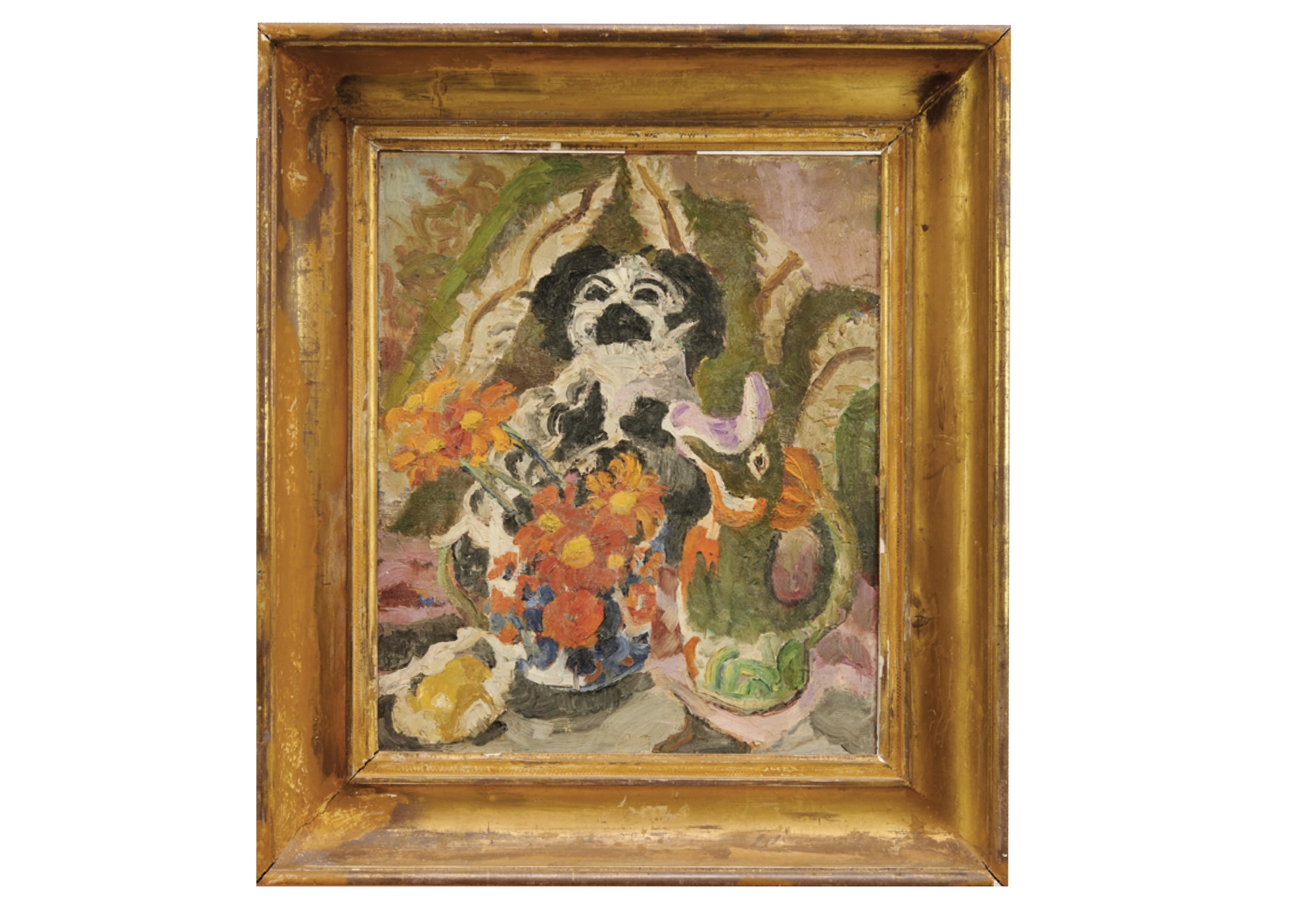
Born into a landowning family near Ipswich, on January 1, 1893, her childhood aspiration to become a pianist had been thwarted when an operation to remove her appendix left her partially paralysed in the right side. Undaunted, she became proficient in using her left hand to paint. Determined to succeed in her chosen field, and financed by family money, she travelled around the UK in the 1920s, going further afield to Egypt, India, and Japan armed only often with a box of watercolours and a letter of introduction to local dignitaries.
When she met Morris she was living at Ackworth House in East Bergholt – a stone’s throw from Dedham and caring for her elderly and ill father.
Early days
Before long Harwood was a regular fixture at the school, even after a fire in 1939 caused it to relocate to Benton End House and Garden – a Grade II-listed 16th-century house on the edge of the ancient Suffolk market town of Hadleigh.
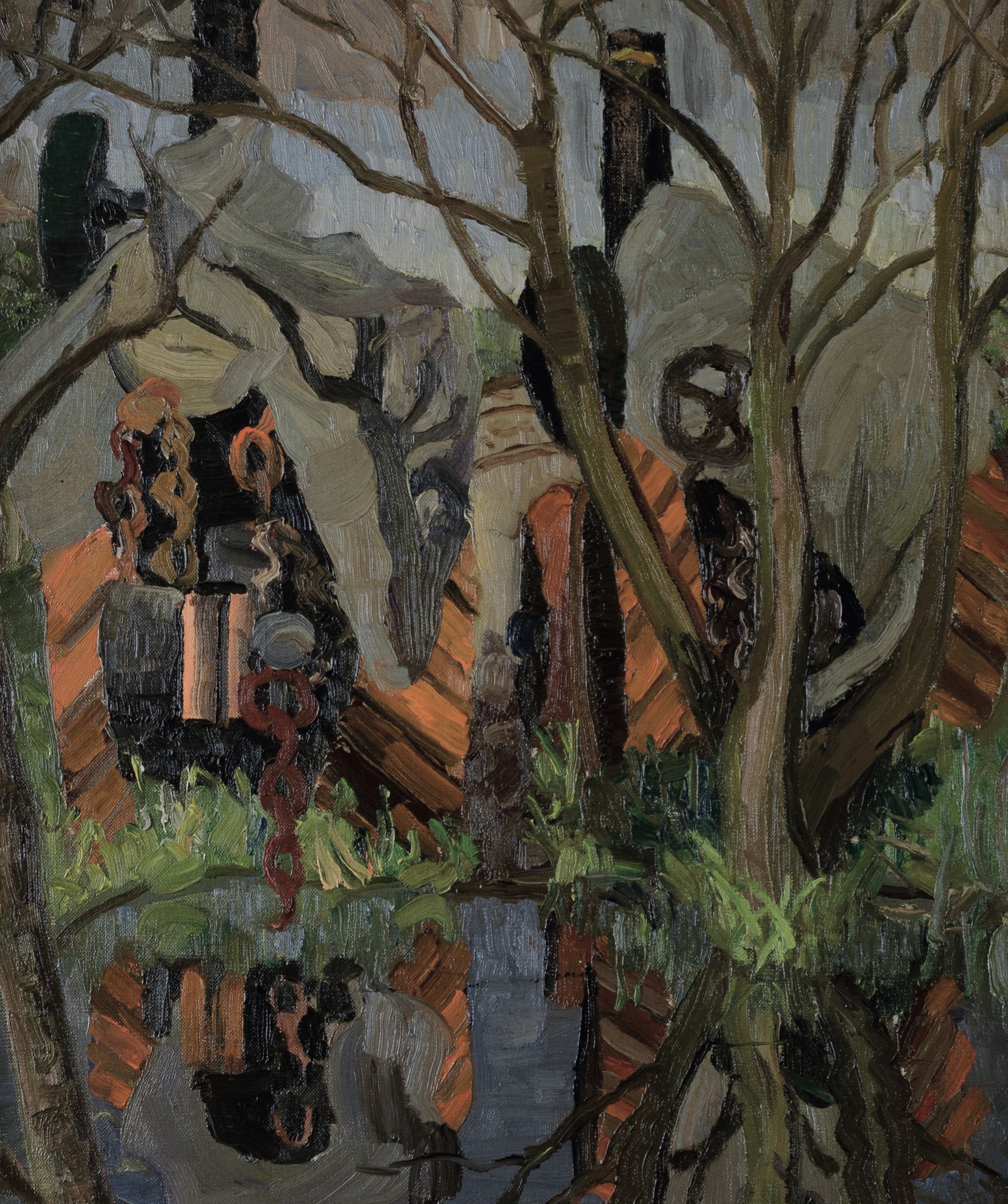
On her father’s death in 1940, Harwood, then aged 47, was free to finally pursue her own artistic dreams. As one of the earlier students she soon found kindred spirits in a number of the other pre-war students including Kathleen Hale (1898-2000) and Joan Warburton (1920-1996). She was especially friendly with Denise Broadey (1913-2007) – who became an Anglican nun before moving to Australia – with whom she travelled to Europe.
Harwood recorded the trips, taken when Benton End closed in the winter, in a travel diary, which also hint at her developing post Impressionist style. She wrote: “In sunny Bruges the tower sang sweetly. I imagined painting a street in Ipswich or Colchester, I should certainly suffer from grey colic at the thought. I’m not a Cubist, I try to paint things approximately as I see them. If I see a place in tones of grey – roads sky – why shouldn’t I paint in orange intwined (sic) with a purple leg against a scarlet wheat field?”
Benton End in its heyday
Benton End quickly became a sanctuary for “artists outside the system” and offered a space for students to both live and work. Morris and Lett-Haines promoted the exchange of artistic ideas and techniques, and took a free rein approach to teaching, which was poles apart from the more formal and structured training offered by most academies at the time.

Aside from teaching, Lett-Haines looked after both the cooking (which was first rate, based on Morris’s homegrown vegetables) and admin, while Morris devoted himself to his twin loves of painting and breeding irises. Before long, as one the school’s longest serving scholars, Harwood became a Benton End institution and a central figure in its riotous social life, overseeing a multitude of art students as well as an eclectic and illustrious array of visitors, including Vita Sackville-West and Benjamin Britten. It was Harwood who insisted on a formal afternoon tea every Sunday.
In the book Benton End Remembered the artist and former Benton End student, Glyn Morgan, wrote: “The students usually prepared tea at about 4.30 except on Sundays, when it was presided over by Lucy Harwood, an eccentric old lady totally dedicated to painting – and very good she was. She walked from her house in Layham carrying a basket of rather old buns and chunks of bread and jam and ruled the tea table with a rod of iron. Her painting technique was very much her own. She would swing a loaded brush at the canvas as if attacking it and when she worked indoors the floor around her would be spread with newspapers to catch the splashes.” Fellow former student Maggi Hambling, who Harwood invited into Benton End for elevenses having found her cowering in the ditch outside aged 15, recalls how “people maintained a respectful distance both from her paint-spattered car and the lethal port wine she served to visitors”.
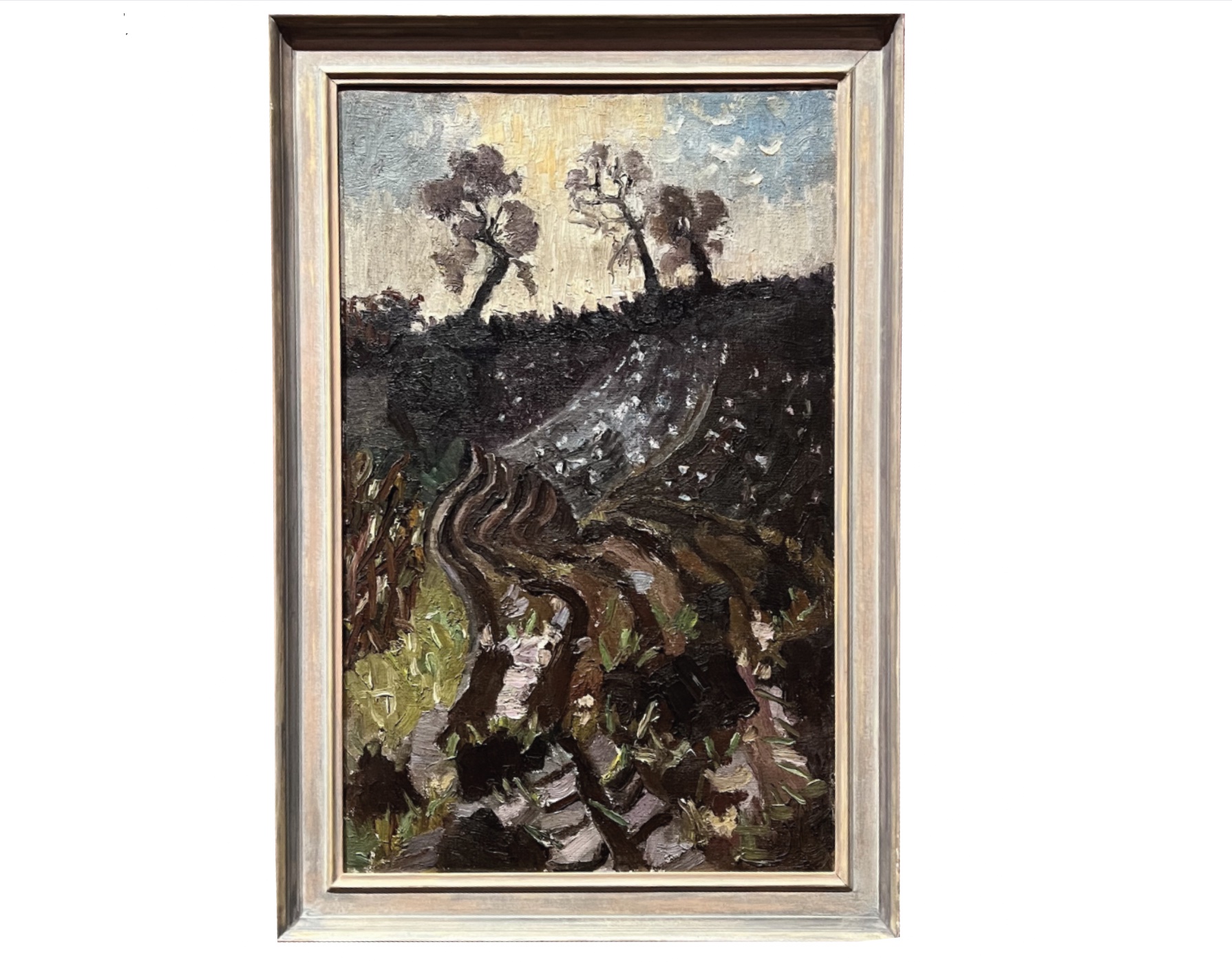
The desire not to submerge herself fully in the school’s rather hedonistic lifestyle meant that she lived away from the premises, at Kiln House in nearby Upper Layham, where she took in Benton End’s more respectable lodgers. She continued to cycle to Benton End every day well into later age, becoming a mainstay of Morris’s circle. She died in 1972. Three years later The Minories in Colchester staged her first solo exhibition with further shows at Sally Hunter Fine Art.
Flourishing style
One of the reasons Harwood succeeded at the school may have been due to Morris’s encouragement to help her overcome the paralysis of her right arm. She wrote: “When I thought it was impossible with only my left hand he (Morris) encouraged me so much by saying everything I painted was good…He overcame my fear that being deprived of my right hand, I could not paint.”

She also appreciated Lett-Haines’s skilled teaching, to such an extent on occasions she paid him a fifth part of the sell price in gratitude. Harwood and Morris also shared a love of plants and nature, and he much admired her selection of plants in her garden at Kiln House.
In 1951, she wrote in her diary: “Cedric came round my garden and said I had really interesting blossoms I think I liked looking at them and he righted my names as to certain crocuses. After lunch he criticised my pictures., six canvases and eight pastels. He suggested minor things that might be done. The criticism was due to my having used a lot of neat blue. I received an interesting dissertation on the use of unrelieved colour, I liked it.”
As well as garden scenes Harwood’s still lifes included dead fish, China dogs and ceramic birds. Exhibition co-curator, Hugh St Clair, said: “She used them to create a colourful and bold arrangement in the post-Impressionist style. She was often keen to add depth and interest to the still lifes by depicting an imagined landscape in the background, rendering the works slightly surreal.”
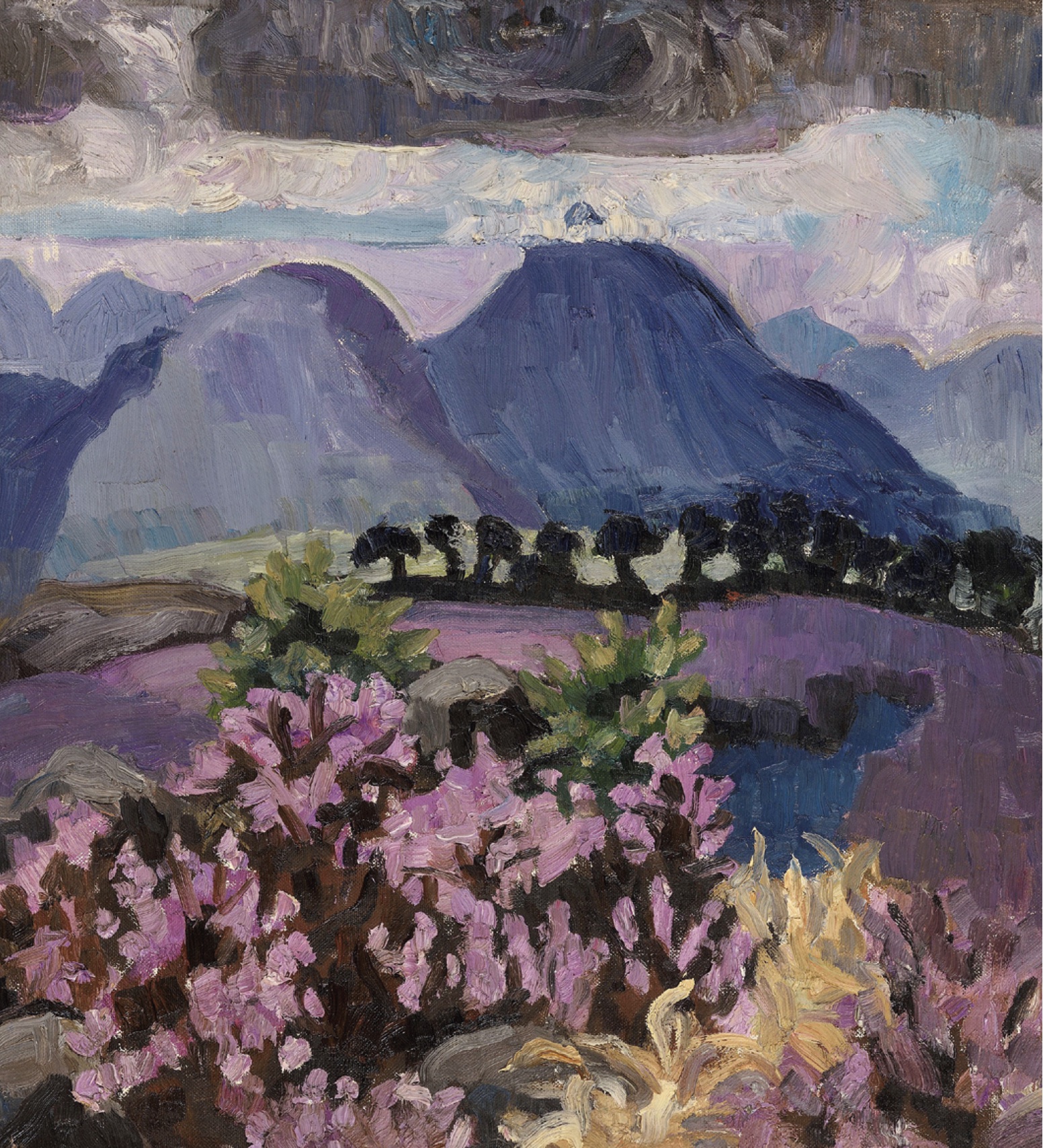
Throughout her life, Harwood had an abiding love of the Suffolk countryside, which was reflected in her artistic output. She also found willing sitters for her portraits among Benton End’s students, frequent visitors and neighbours. With the encouragement of both Morris and Lett-Haines, Harwood found some success exhibiting two works at the Ipswich Art Club in 1941. She was also a member of the Norfolk and Norwich Art Circle and became one of the earliest members of the Colchester Art Society, taking part in its first exhibition in 1946.
Lucy Harwood: Bold Impressions is on now at the Colchester art gallery Firstsite and runs until April 14. For more details go to www.firstsite.uk
Benton End at Auction
There is no doubt the work of a number of artists from Benton End, including Harwood, are in the ascendancy. Gabrielle Downie, auctioneer at Cheffins, said: “With the renewed interest in Morris and his works, this is also a particularly exciting time for female artists who studied under Morris, but whose work has since been largely forgotten.”
Reeman Dansies’ Daniel Wright, said: “Harwood’s work was often gifted to friends or sold cheaply, she was generally considered to be an eccentric amateur and there was little critical acclaim for her work during her lifetime. In recent years her work has seen something of a meteoric rise at auction with prices increasing consistently.”
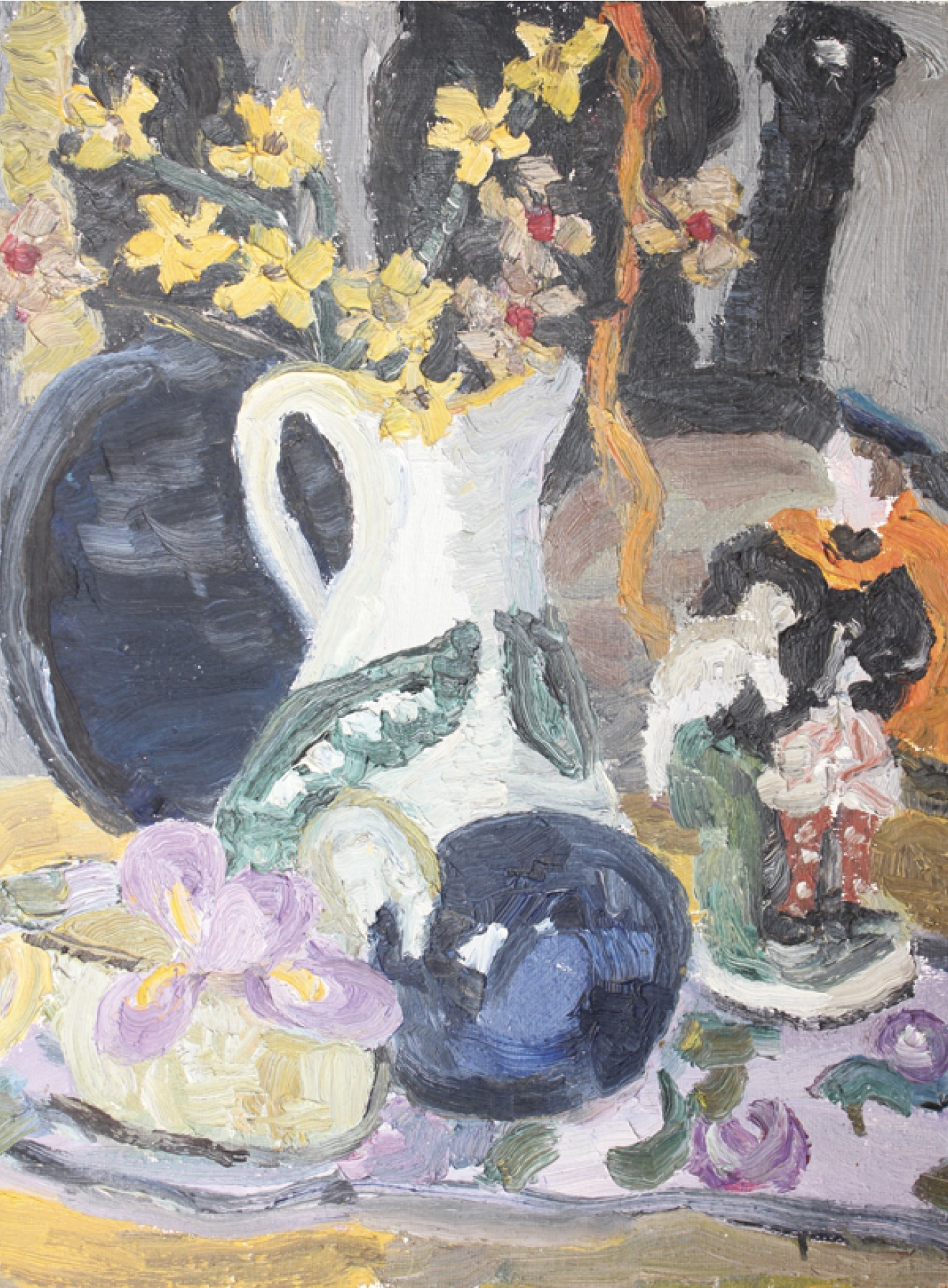
Particulary popular are her Suffolk landscapes which attract high prices at auction, he added. Shaun Crichton, associate partner at the Suffolk auction house Lacy Scott and Knight, said: “We have sold a number of works by Lucy Harwood over the past two to three years. She’s an artist who only really came fully to my attention when we sold the first work offered in these rooms for £2,700 against an estimate of £80-120!”
Breaking the mould
Cheffins’ director, Brett Tryner, said: “As contemporary tastes continue to bend towards colour, pattern and figurative painting. It is likely that collectors will look to buy up works by lesserknown members of the group for a potential investment. Benton End is like the Bloomsbury Group but not as well known. As Benton End itself prepares to be reopened to the public, we expect that this phenomenal group of artists could see new levels of recognition.”

And the next group of Benton End artists set to shine? Cheffins’ Gabrielle Downie, said: “Mary Jewels, Rosemary Rutherford and Joan Warburton are beginning to receive recognition. In addition to the female artists, look out for the works of Glyn Morgan and Allan Walton, both members of the Benton End group and a good investment.”

Benton End Today
After Morris died in 1982 Benton End remained in private hands, with few changes over the intervening years to the building or garden. The renewal of interest in Morris was prompted by a display of Morris’ irises at the RHS Chelsea Flower show in 2015 followed by two exhibitions opened in London: Cedric Morris: Artist Plantsman at the Garden Museum, and Cedric Morris: Beyond the Garden Wall at Philip Mould & Co. Gallery.
Inspired by all three, Rob and Bridget Pinchbeck discovered Benton End was for sale and purchased the house and garden through the Pinchbeck Charitable Trust in 2018.
The Garden Museum in London, to which ownership of the house has been transferred, appointed a new head gardener in 2023 with the expectation being the gardens will be open to the public in 2026.

Worthy legacy
The redevelopment of Benton End hopes to see it restored to its post-war bohemian glamour and atmosphere, including a new gallery and a teaching facility for students to study the garden.
This January will see an application submitted for National Lottery funding to restore the house’s layout almost exactly to that of Cedric and Haines-Lett’s Benton End. Trustee, Matthew Hodges, said: “For a building of such historic interest and grand age, it is in remarkably good condition and, to our delight, the garden, under careful management, is revealing once again many of the same plants that Morris collected so assiduously on his travels, bringing them home to Suffolk.”
In 2023, there were more than 1,000 visitors to the house and garden including 700 who visited the property as part of Hadleigh’s Hidden Gardens event. Donations to Benton End’s restoration and upkeep are welcomed. Anyone wanting to support the project, or visit the house and garden, should contact matthew@bentonend.co.uk

